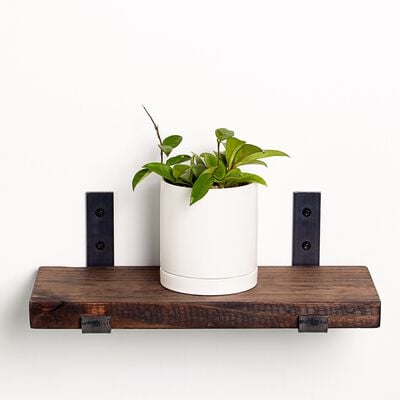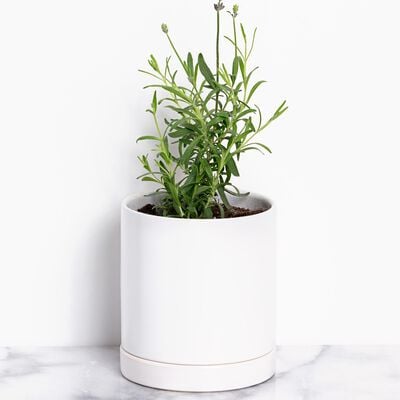
Garden Plants That Are Poisonous to Pets
Learn why you should always be cautious when choosing plants for your garden.
Some curious pups love to graze on whatever they find growing in your backyard. There's just one problem: taking a bite off of a poisonous plant leaf, sap, bulb, or berries can cause harmful side effects for your pet.
Trees, shrubs, and flower beds can make all the difference in transforming your backyard into an outdoor oasis. But as you look around your property, it's important to keep your canine companion's needs in mind. This is particularly true when you're deciding which kinds of plants to grow in your backyard. Some of the most popular plant varieties can actually make your outdoor space unsafe for your dog.
Some symptoms that your pooch may have eaten a toxic plant are an upset stomach, drooling, and muscle weakness, among other things. The good news is, you can easily keep Rover out of harm's way by planning ahead, staying informed, and taking simple action steps to protect your fluffy friend.

Garden Flowers
Some of the most popular annual and perennial garden flowers are actually unsafe for dogs. Any plant that grows from a bulb poses some danger to your pet, since the bulb is where the toxic elements have the highest concentration. So while eating a flower or leaf could cause your dog to experience uncomfortable symptoms, eating a bulb warrants an immediate call to your vet. The flowers that pose the most harm to your pet include:
- Daffodils (all parts of the plant, especially bulbs)
- Foxglove (all parts of the plant)
- Monkshood/wolfsbane (all parts of the plant)
- Irises (bulbs)
- Crocuses (particularly the Autumn Crocus) (all parts of the plant)
- Tulips (particularly the bulbs)
- Periwinkle (all parts of the plant)
- Morning glories (flowers and seeds)
- Azaleas (all parts of the plant)
- Hyacinths (particularly the bulbs)
- Water hemlock (all parts of the plant)

Herbs & Vegetables
You should also be mindful of toxicity risk if you have an herb or vegetable garden. While your home-grown vegetables may be a wonderful addition to your favorite recipes, many of the plants are not safe for your fluffy friend to consume. You'll notice that what most of these plants have in common is that they grow underground and are bulb-shaped.
You should also know that plants in the nightshade family (like tomatoes) typically contain a compound called solanine that can be harmful to dogs if eaten in large amounts. Solanine is most highly concentrated in the leaves and stems of nightshade veggies, which means the vegetables themselves are less of a concern than the leaves. The herbs and vegetables that pose a risk to your pet include:
- Onions (bulb)
- Tomato plants (leaves)
- Shallots (bulb)
- Rhubarb (leaves)
- Leeks (bulb)
- Garlic (bulb)
- Chives (bulb)

Vines, Shrubs & Trees
Some vining plants, shrubs, and trees can also be toxic to your dog -- usually because of the fruit, berries, and/or nuts they produce. These include:
- Hydrangea
- English ivy
- Apple trees
- Apricot trees
- Cherry trees
- Peach trees
- Black walnut trees
- Horse chestnut trees
- Sago palm
- Holly Yew shrub
If you have any berry or fruit-bearing plant in your yard, it's worth asking your vet if it's a toxicity risk. Many berries (such as holly and yew) are extremely toxic to dogs if your pup tries to taste them. The pits of fruits such as apricots, cherries, and peaches often contain high concentrations of cyanide, which is why it's important dogs don't snack on them in your backyard. Be aware that tree nuts, as a general rule, aren't safe for your pup to consume.

Alternatives To Plants
If you're looking to landscape with your doggo in mind, you still have plenty of options. As a rule of thumb, start by considering bulb-free plants to rule out any danger of your pup consuming a toxic bulb.
Examples of plants that pose little or no risk to dogs include:
- Sunflowers
- Lavender
- Rose bushes
- Honeysuckle
- Calendula
How To Protect Your Dog
There are some plants that are not worth the risk when it comes to having them in the same area as your dog. Foxglove, dogsbane, hemlock, and autumn crocuses, as well as tomato, garlic, onions, and shallots, are especially dangerous to your dog. Any area of your yard that contains these plants should be fenced off and kept inaccessible to your fluffy friend. If that isn't possible, these plants might need to be removed from your landscape entirely for pupper's protection. For garden beds that contain bulbs and other flowers that could pose a risk to your dog, consider chicken wire fencing, netting, or other kinds of barriers.
One thing that you probably don't have to worry about is your dog eating grass. While many dogs have a habit of taking a bite or two out of your lawn, this is usually not a reason for concern. As long as your dog is otherwise healthy, grass is usually safe for dogs to eat.
If you believe that your dog has eaten a poisonous plant, call the vet. Don't wait to see if your dog shows symptoms, because some plants can take days for indigestion and other signs of toxicity to show up. Describe to the vet what happened and ask what to do. If your dog is already showing symptoms, call the pet poison hotline or another veterinary hotline right away.
If you're looking for alternatives, be sure to check out our collection of indoor pet-friendly plants.

